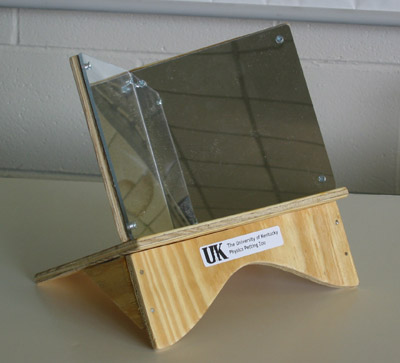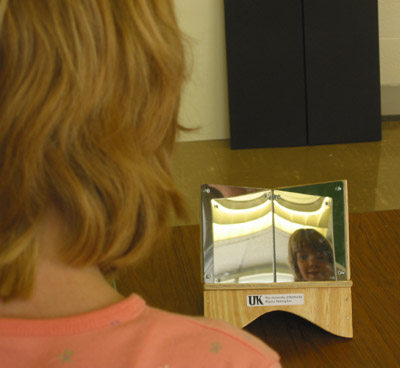

Instructions for:
Corner Mirror

Upon first glance this combination of two mirrors, angled perpendicularly gives the same reflection as a normal mirror. But closer observation reveals that when you wink your left eye, so does the mirror-image self looking back at you Ė which is different from what most mirrors do. Another difference is that everyone sees their own reflection centered in the mirror, even when several are looking at it at once.
As an aid in explanation of this demonstration we give a pair of ray diagrams that the path of a light ray from one eye through the mirror assembly, and back out again, to be seen by the other eye.
If the Corner Mirror falls out of adjustment, so that the two halves of your reflection donít match, a slight angle adjustment is needed. The two acrylic mirrors should be exactly 90 degrees apart for the demonstration to work. To adjust the angle, a bracket is provided on the back of the mirror. Loosen the screw that connects the bracket to the base, and move the mirror into place, and then tighten the screw. Also, clean mirrors aid in making this an interesting demonstration.
Questions for Students / Items of Interest:
Use your finger. Place it in front of your left eye (this is easier if you close this eye), and move it towards the mirror, keeping the reflection of your finger in front of the reflection of your closed eye. This should follow the path of a light beam from your left eye to the mirror, and eventually to your right eye.
Q2) How is the corner mirror different from a normal mirror?
See Diagrams above.
Copyright 2004 Straley/Pinney - The University of Kentucky Physics Petting Zoo